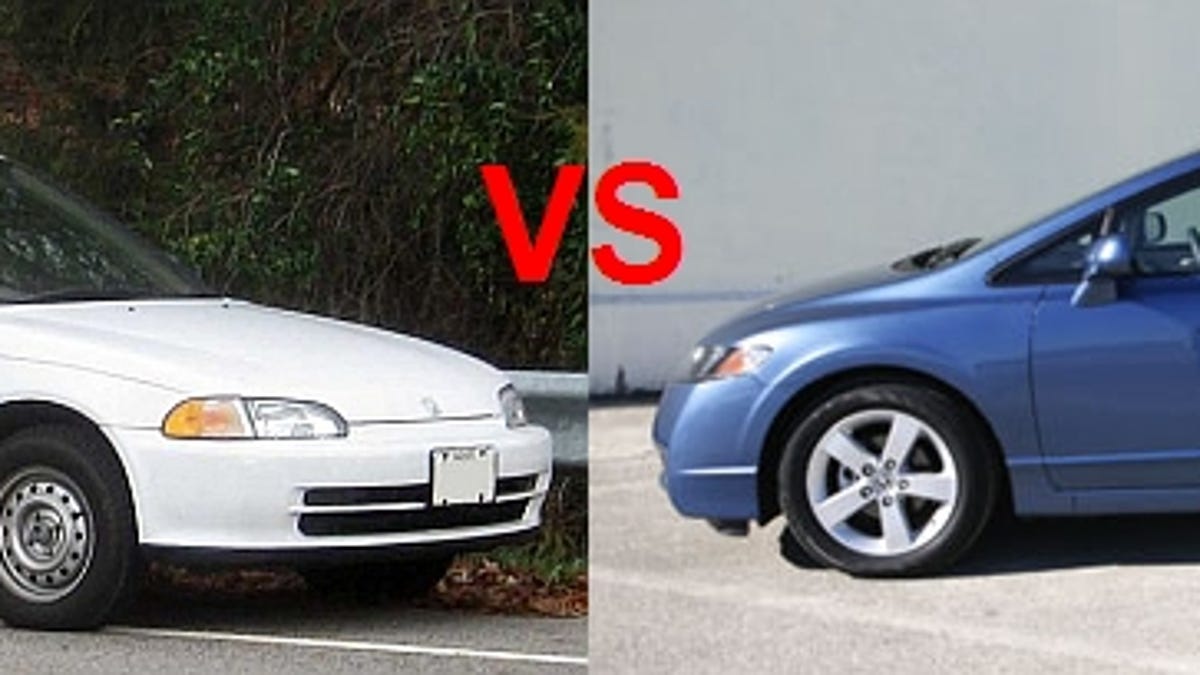Looking beyond miles per gallon (rant)
Associate Editor Antuan Goodwin explains why there's more to a vehicle's efficiency than the mpg.

Not a week goes by where someone doesn't approach me with the same smug, "Oh, my '92 Civic hatch gets better fuel economy than the current Civic," or "LOLZ! My Geo Metro XFi getz teh 50mpg!!! PWND!!" This is usually followed by some ill-researched rant about how the gasoline engine hasn't advanced in 40 years or how automakers and oil barons are conspiring to keep gasoline expensive. In reality, compared with their modern analogs, your late-'80s vintage econobox is crap. I'm sorry to say it, because I love older compact cars, but you're just not comparing apples with apples.
Firstly, mpg isn't a true measure of a vehicle's efficiency; it's a relative measure of economy. Miles per gallon doesn't take into account the vehicle's weight, speed, or the actual work the engine is doing. For example, 30 mpg in a compact car is pretty average these days, but that would be abysmal fuel economy for a scooter or unbelievable fuel economy for a train. The number means nothing taken outside of its context. The fact is: most people can't see past the mpg to the big picture.
Most people just look at the mpg on the sticker and think, "Poo poo, cars have gotten so inefficient," before getting all nostalgic about their crappy old Metro. It's just not that simple. We have to look at the whole vehicle to see the truth. We ask our cars to do so much more these days than just deliver us from point A to B. Now, they have to get us there more quickly than ever, entertain us along the way, keep us comfortable, keep the air and the environment clean, and protect us from danger.
So, in go pounds of sound-deadening material, power seats, power windows, thicker glass, higher-quality plastics, more powerful and reliable climate control components, heftier suspension components, bigger gas tanks, sunroofs, amplifiers, 9-speaker stereo systems with subwoofers, 17-inch wheels with bigger tires, a half dozen government-mandated airbags, crumple zones, minimum hood heights, seat belt pretensioners, antilock brake systems, etc. Vehicles grow larger with more leg, shoulder, and foot room, usable back seats, and much larger trunks. Why? Because you want these things, that's why!
All of this comfort and convenience adds up to a bigger, heavier vehicle. I'll use the Honda Civic as an example. The current-gen Civic is much larger than my '90s-era Toyota Camry was and is about 700 pounds heavier than the 1992 Civic! Even the tiny Honda Fit is heavier and better equipped than your average '92 Civic. That's also before you consider that the average American driver and passenger weighs more than they did a decade ago. Hey, weight is weight and every pound counts.
So, the 2,900-pound tech-laden 2009 Honda Civic EX is about 32-percent heavier than the scrappy and eager 2,200-pound 1992 Civic EX. But at 34 highway mpg and 41 highway mpg, respectively, there's only a 17-percent deficit in fuel economy. Pound for pound, I'd say the 2009 engine is more efficient.
Also consider that while the current Civic gets fewer mpg, its ULEV-2 rating means that it's actually much cleaner than the 1992 model, emitting fewer smog producing particulates into the atmosphere thanks to its more-complex emissions equipment and more-precise combustion.
Sure, the early-'90s era Civic got better fuel economy than the current-gen counterpart, but it was also louder, lighter, dirtier, and probably much less safe. There's more to the picture than what the simple mpg estimates present. I'd say that for the most part, the gasoline engine has done a pretty good job of scaling to meet the needs of today's bigger, more complex vehicles.
Internal combustion engine technology has advanced significantly in just the past few years. We've seen widespread use of turbocharging, direct injection, alternative combustion cycles (such as the Atkinson), continuously variable transmission and double clutch transmission technology, variable valve trains, start-stop technology, etc. That's just the tip of the iceberg when it comes to the bog standard suck, squish, bang, blow gasoline-burning engine. This doesn't even include the advancement made with diesel engines, alternative fuels, and hybrids power trains.

